Saturday, November 12th 2011

Sandy Bridge-E Benchmarks Leaked: Disappointing Gaming Performance?
Just a handful of days ahead of Sandy Bridge-E's launch, a Chinese tech website, www.inpai.com.cn (Google translation) has done what Chinese tech websites do best and that's leak benchmarks and slides, Intel's NDA be damned. They pit the current i7-2600K quad core CPU against the upcoming i7-3960X hexa core CPU and compare them in several ways. The take home message appears to be that gaming performance on BF3 & Crysis 2 is identical, while the i7-3960X uses considerably more power, as one might expect from an extra two cores. The only advantage appears to come from the x264 & Cinebench tests. If these benchmarks prove accurate, then gamers might as well stick with the current generation Sandy Bridge CPUs, especially as they will drop in price, before being end of life'd. While this is all rather disappointing, it's best to take leaked benchmarks like this with a (big) grain of salt and wait for the usual gang of reputable websites to publish their reviews on launch day, November 14th. Softpedia reckons that these results are the real deal, however. There's more benchmarks and pictures after the jump.
Source:
wccftech.com
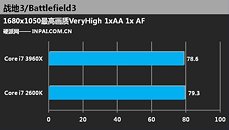
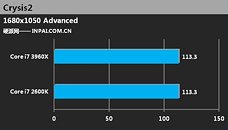
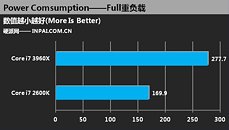
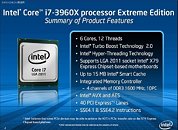
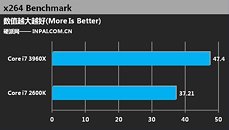
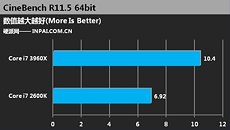
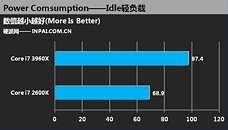
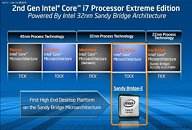
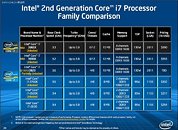
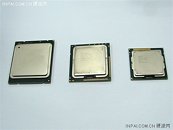
171 Comments on Sandy Bridge-E Benchmarks Leaked: Disappointing Gaming Performance?
I must look up the architecture diagram of SB-E.
Unlockable later .......for a price or neutered?
And a die shot:
Surely, at this already high enthusiast level of performance and price, people will pay for the high performance cooling required (and the large electricity bills...)
As for the topic of this thread, I knew before hand that performance core for core clock for clock was no improvement.
btarunr owes me a 4pack of Guinness in 3 months when IB comes out on 1155 and smokes 2011.
(If timelines are correct and IB-E wont be out for another year)
TBH, it was apparent, the few things that SB-E was supposed to have that were improvements all got canceled. So it was left with PCIE lanes and quad channel memory controller, neither of which are important at this juncture.
There is a actually a slight hit in percore/clcok production due to the overhead generated by the BUS.
Now when IB-E comes out, will it be an improvement over IB... possibly... too early to speculate at this time. But at this time, and over the last 6 months, IB will be better than SB-E. I have nto seen any 58x SB-E chips yet... but for SB that was a matter of binning. Not many people can afford to bin 200 $11000 chips, even ones that could afford to bin 200 $300 chips.
Bulldozer faster & more efficient than Sandy Bridge E per thread.
Per thread performance doesn't mean much, and overall performance is a much better indicator
You you make Bulldozer 33% bigger and more packed, the CPU would need it's own power supply and phase-change cooling :laugh:
For a real comparison of efficiency, compare the 3960X to the FX-6100. Both have 2 cores and a comparable amount of cache disabled.
Bottom line, nt300:
SB-E is only a little better than SB in terms of performance overall (considering most people's usage here).
BUT, it still blows away BD.
That being said, there is no BD chip comparable to the SB-E, and even if there was, per thread performance would not be better, ever. SB tech is 50-75% faster, single threaded, which makes everything faster.
Second,
An SB-E is not comparable to an fx-6100; an fx-6100 is, from an operational standpoint, a triple core with hyperthreading. You'd have to glue together two of them to come to some kind of comparison win a 6/12 SB-E.
I know you're essentially right and you know I've been saying the same thing since BD architecture was revealed. But as to your post, not really, since we are talking about competitiveness. First of all ask AMD about how many cores are there. Second, compare silicon versus silicon. Both SB-E and Zambezi have 2 billion transistors (which is key to comparing efficiency) and 8 cores (again ask AMD). Both 3960X and FX-6100 have 2 cores disabled, simple. SB-E has 4 MB more cache, which makes up for the small transistor count difference and specially die size difference.
SB-E is definitely a more efficient design, that's crystal clear.
Anyway, it doesn't matter which approach you take AMD's design is not more efficient and that's what I was saying, simply.
a) Comparing transistor count/die size. Zambezi is 8 "cores". SB-E is 8 cores/16 threads. Both have a similar transistor budget, if we are taking the approach of comparing architectures by this measure, BD and SB-E are indeed the chips to compare. Now performance wise, with 2 cores disabled SB-E is 40-50% faster compared to 8 "core" BD and twice as fast as the 6 "core" BD.
b) We go by real cores. Then Zambezi is 4c/8t. The only chip we can compare it to is SB 4c/8t. In this case transistor budget is half of that in Zambezi and it even has integrated GPU. Performance is similar, making performance per thread equal when all 8 threads are in use. When only up to 4 are used SB is a lot faster, and remember it's half the size.